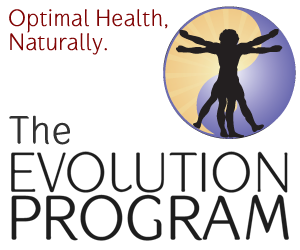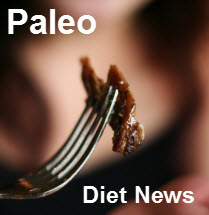Paleo Diet News: Are These 8 Foods Paleo?
No matter how hard all of the most famous writers in the Paleo and Primal world try to be as specific as possible, in their classification of foods as either “Paleo” or “not-Paleo“, there are always some that slip through the cracks. The nice thing about having a blog, as well as a popular book, is that the writers get to basically make amendments or sometimes even retractions to the information that they originally published in their books.
A blog can be edited and updated at will, which makes the data incredibly dynamic….unlike a book. Once a book has gone to print, and been shipped to bookstores all across the world, there’s no way make any additions or changes, without publishing an updated version.
Mark Sisson is one of these very popular member’s of the Ancestral Health Community, who has a very popular book. Luckily, he also has a very popular blog, which regularly releases very informative posts to keep the information fresh.
Today, I’d like to draw your attention to an article on Mark’s Daily Apple, entitled “Is It Primal? - 8 More Foods Scrutinized“, posted on the 9th of May, 2012. Mark’s personal brand of Ancestral Health formula is called “Primal”, which is a whole heck of a lot like “Paleo” with a few key differences. So, saying “is it Primal?” is a lot like saying “Is it Paleo?”.
In this recent article, Marks addresses whether or not the following food are, or are not “Primal”:
- Cashews
- Wheatgrass
- Fermented Soy
- Vinegar
- Almond Milk
- Hummus
- Royal Jelly
- Green Coffee Bean Extract
Here’s a brief outline of the article, but please head on over to Mark’s blog to get the whole story:
Are These 8 foods Paleo?
“Cashews
The cashew is high in monounsaturated fat (7.6 g per ounce) and, while it contains a decent amount of omega-6s (2.2 g per ounce), it’s lower in polyunsaturated fats than Primal favorites like almonds (3.5 g per ounce).
The cashew is, however, one of the richest sources of phytic acid in the nut and seed world, containing more phytate than almonds, hazelnuts, walnuts, and chestnuts. For that reason, I consider it helpful (and perhaps paramount) to soak your raw cashews before consuming them – especially if you’re trying to get over tooth decay or combat osteoporosis.”
“Wheatgrass
I’m all for fresh wheatgrass for chickens – heck, I’d even juice it for them if it meant more eggs – but I fail to see the relevance to human diets. Is there nutrition in wheatgrass? Sure. Is it accessible to humans if we
pulverize the cellulose and extract the juices? Probably. But just check out the Wiki article, which has a table comparing the nutritional content of wheatgrass juice to spinach and broccoli. Spinach is clearly superior, almost across the board, with more magnesium, calcium, iron, potassium, and beta-carotene. Plus, it tastes better (read: not like lawn clippings) and is a lot less expensive.”
“Fermented Soy
I’ve said my piece on soy before: it’s potentially phytoestrogenic, mildly carcinogenic, mineral-binding, and goitrogenic. Its oil is in everything nowadays, and most of our animals are a third soybean meal. Bad stuff all around. But that was about soy-based products and processed soy; what about fermented soy? What about miso, natto, and tempeh? We’re big fans of fermented foods in general around here, so it stands to reason that fermented soy might enjoy a slightly different reception.”
“Vinegar
Table vinegar – the kind you put on salads – is mostly water, with around 4-8% acetic acid (which is actually a short-chain fatty acid, a la butyric acid). The dangerous corrosive agent, then, is highly diluted before it reaches your mouth. I wouldn’t recommend guzzling shots of vinegar (except on a dare, perhaps), but it’s not a problem in the context of normal consumption. Besides, there are actual health benefits to using acetic acid dilute, I mean vinegar:
In type 2 diabetics and people with insulin resistance, vinegar improves insulin sensitivity when taken with a high-carb meal.”
“Almond Milk
is almond milk Primal? Sure, in theory. Grind up some almonds, mix with water, and strain them to produce a “milk” uses nothing but Primal ingredients and practices. There’s nothing overtly “wrong” with that. But there’s also nothing very exciting. I’d guess if you make it from scratch, there’s a good chance your milk contains a decent amount of the nutrients inherent to almonds, like magnesium, vitamin E, various phytochemicals, but there’s also a chance that a lot of it is retained in the solids.”
“Hummus
It certainly isn’t Primal, seeing as how it’s pretty much just a bunch of mashed chickpeas, which are legumes. But good hummus, prepared with soaked, lightly fermented chickpeas, high quality extra-virgin olive oil, preserved lemon, tahini made from sprouted sesame seeds, pungent garlic, sea salt, and pepper? Skip the pita bread and opt for carrot sticks or celery slices (or just a spoon) and there are far worse ways to cheat.”
“Royal Jelly
Royal jelly is kinda like bee colostrum. When a queen is dead or dying, and the worker bees (don’t get any ideas, guys) need to make a new one, they select a few larvae and feed them royal jelly for the rest of their lives. The jelly (which workers secrete from glands located in their heads) is rich in nutrients and contains a special growth-promoting protein called royalactin (which turns larvae into queens by speeding up growth and ovary development). All larvae receive royal jelly for at least three days, but only the future queens get it indefinitely. Queens also live for as long as five years, while the workers live for perhaps a month. The only difference between a worker and a queen is that the queen gets royal jelly for life. Other than that, they’re genetically identical.”
“Green Coffee Bean Extract
Coffee contains chlorogenic acids, organic compounds that have been shown to benefit glucose tolerance in humans. Green coffee bean extract (GCBE) also contains chlorogenic acids, and a recent study found that GCBE supplementation reduced body fat and resting heart rate in obese human subjects, though researchers weren’t sure whether the caffeine content of GCBE was partly responsible.”
What’s the verdict on each of these? Well, you’re going to have to visit Mark’s blog to find out. Mark deserves the traffic, so please show your support.
Personally, I think that the only one of the bunch that could be considered “Paleo” is the vinegar. While it is a food that requires a little “processing” and wouldn’t have been something that Paleolithic people would actually have used, it is an ancient, traditional food. Fermentation have been around for thousands of years, and Vinegar has carried a healthy reputation for the majority of that time. What do you think about these items?
-
If you found “Are These 8 Foods Paleo?” useful,
please click the ‘LIKE’ button below to share on Facebook. We also invite you to leave comments, and join the Paleo Diet News discussion!
Go to www.undergroundnutritionist.com, and download my 30-Day UN-Challenge eBook now……It’s a step-by-step guide to your personal health revolution.
Barry Cripps is a Paleo-based, Certified Nutrition and Wellness Consultant, who operates out of Bowling Green, Kentucky.
For more information please visit: www.undergroundnutritionist.com





